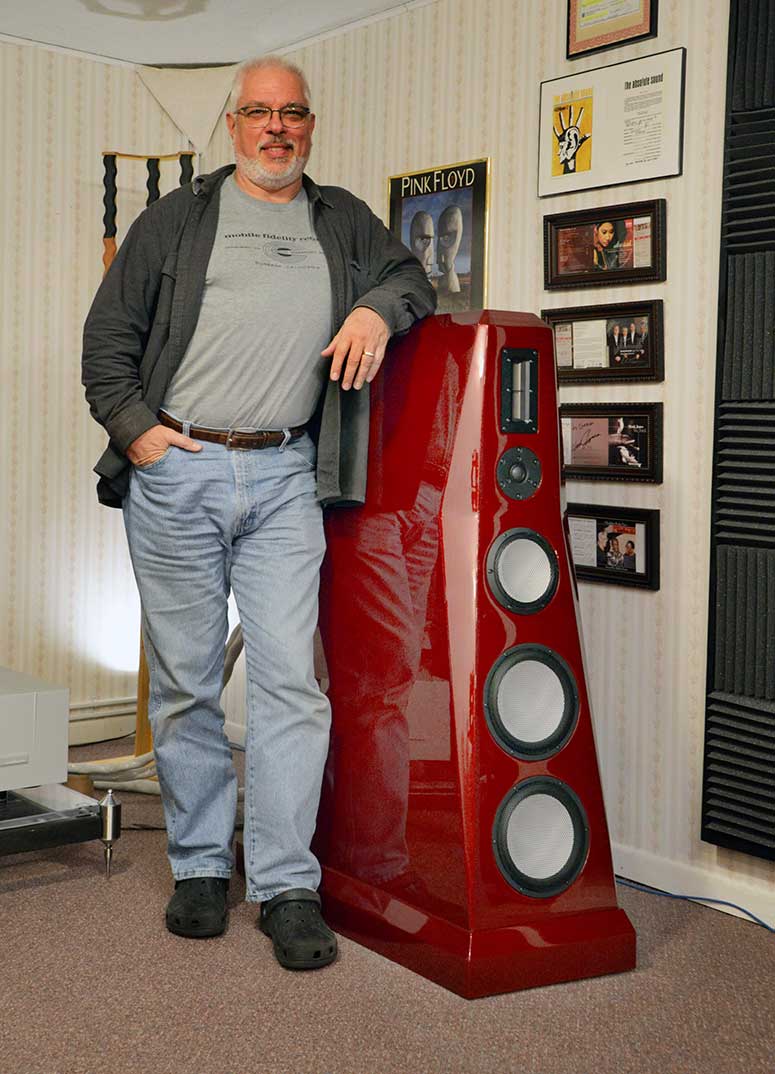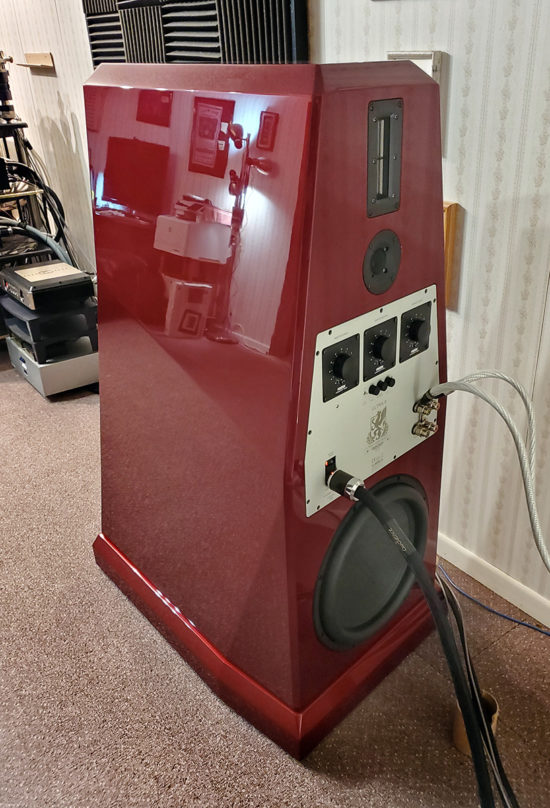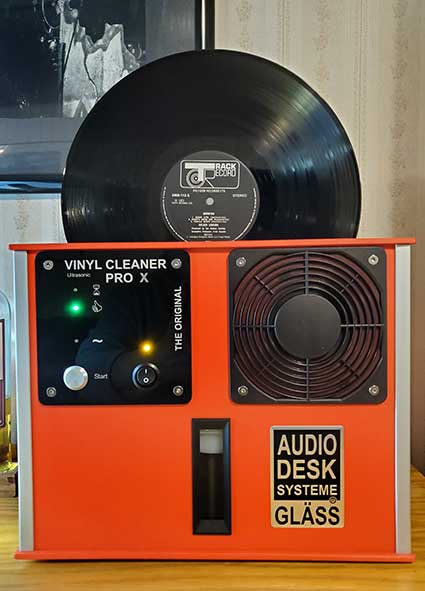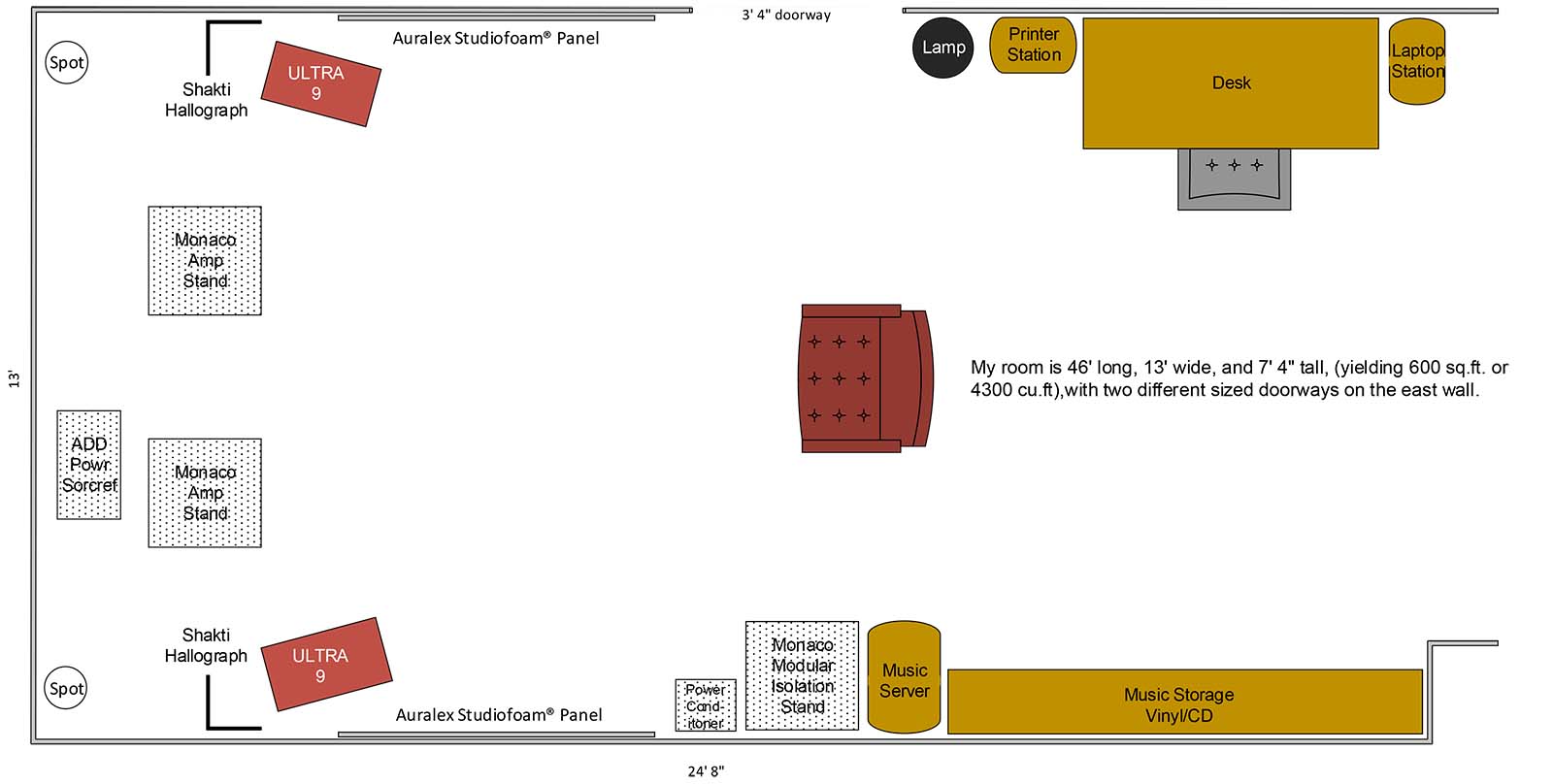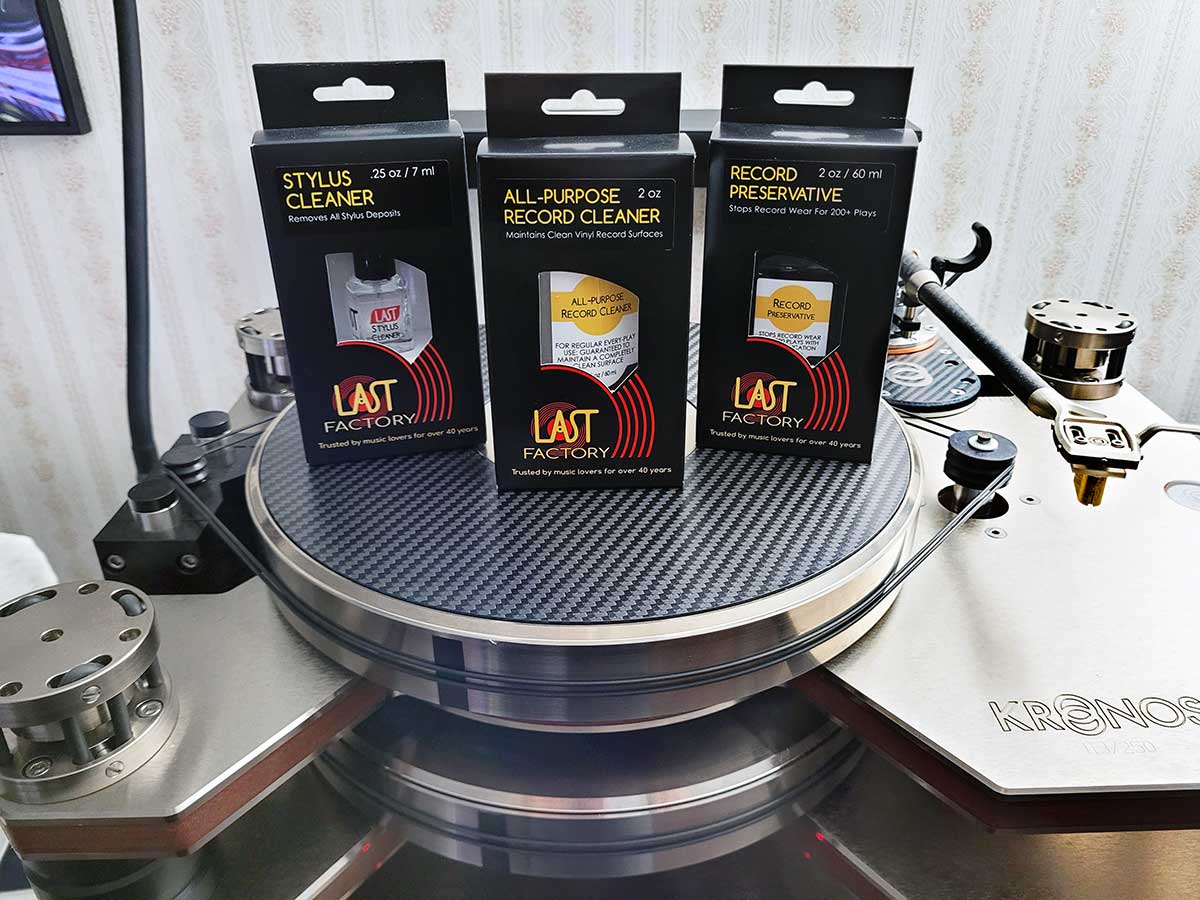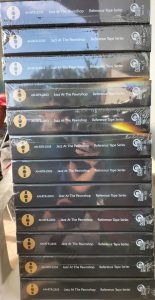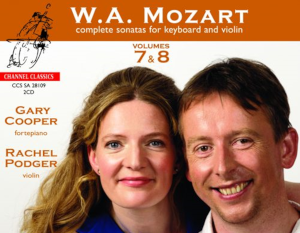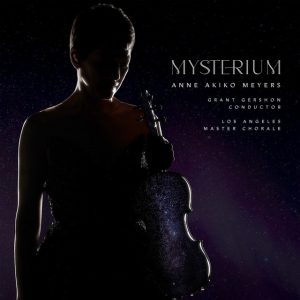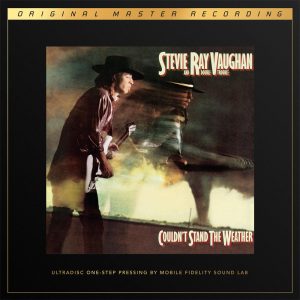
Stevie Ray Vaughan And Double Trouble, Couldn't Stand The Weather. Mobile Fidelity Sound Lab, UD1S 2-007, UltraDisc One-Step, Original Master Recording, 2 x 12" 45 RPM SuperVinyl 180g LPs, Numbered Limited Edition, Remastered, Deluxe Edition Box Set, 2021
First up...the 2021 Mobile Fidelity Ultra Disc 1 Step remaster (UD1S 2-007) as two, 12-inch 45 RPM LPs released in a limited run of 7000, of Stevie Ray Vaughn's 1984 milestone release, Couldn't Stand the Weather. This double 45 RPM remastered reissue is pressed on what they call "SuperVinyl," and as you can see from the photo below, it is virtually transparent! This LP reveals STAGGERINGLY good remastering at the hands of Krieg Wunderlich, assisted by Rob LoVerde, done at the Mobile Fidelity Sound Lab® facilities in Sebastopol, California, all done employing The Gain 2 Ultra Analog System™ of gear developed by a genius—and a friend—the late Tim de Paravicini.
This highly anticipated and critically acclaimed sophomore release by Stevie Ray Vaughan and his band Double Trouble dropped to the delight of blues fans May 15, 1984, by Epic Records, and features an even mix of originals and covers, every one of which is consummately delivered. Stevie and company really shine here, bringing their original classic Texas-style boogie blues to every cut. With Couldn't Stand the Weather, Stevie pleased the critics and his fans alike, confirming that his acclaimed debut Texas Flood from the year prior was no fluke, and then topping the sales of that 1983 freshman outing. It sent a clear message to anyone who doubted that this cat was an unparalleled giant of modern blues. And his meteoric rise, starting with the success of Texas Flood, triggered a notable resurgence in the popularity of the Blues across the nation throughout the 1980s.
Having moved to Austin's fertile music scene after dropping out of high school in 1972, diving into the club scene there, and picking up a lot of studio work, Stevie was joined by bassist Tommy Shannon and drummer Chris Layton, and the trio became known as Double Trouble in 1978.
Side one of this UD1S release of Couldn't Stand the Weather, begins with one of two original instrumentals "Scuttle Buttin'," an upbeat cut that prepares your audio palate tonally for the next, and title, track. "Couldn't Stand The Weather," with its definitive, unforgettable riff, and its strategic pauses and restarts, led by Chris Layton during the deliberative intro, underscores the microdynamic nuances and delicate shading that this LP is able to reveal. During one of these pauses, Layton's subtle and hushed timekeeping is so readily apparent, so clearly outlined and defined in space, that you can almost tell what brand of shoe he is wearing! And at the other end of the dynamic scale, his drum snap near the beginning of the cut is sharply rendered in its attack, crisp and finely defined in both its physical space and in its material attack and subsequent decay. The side closes with "The Things (That) I Used to Do," a traditional, slow blues, Eddie Jones cover featuring a guest appearance by Stevie's older brother Jimmie, founder of The Fabulous Thunderbirds, who takes immense pleasure in showing Stevie that he isn't the only one who can lay down rapid guitar licks between Stevie's haunting vocal lines.
One of the two biggest highlights for me on the record is next, the only cut on side two of the first LP, Stevie's rendition of Jimi Hendrix's "Voodoo Chile (Slight Return)." While this cover retains much of Jimi's psychedelic vibe, it adds some fire and clearly showcases Stevie's exceptional technical skills on his instrument.
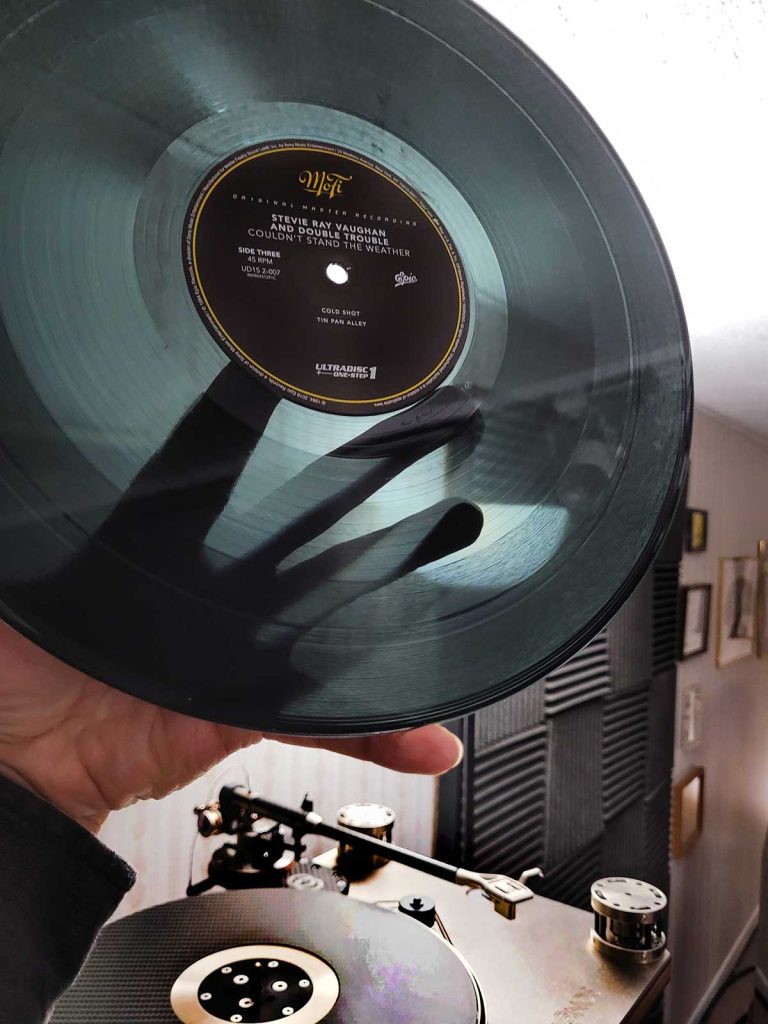
Side three opens with "Cold Shot," an accessible pseudo-pop/rock cut, built on a simple and catchy guitar riff that really works well in complement to, and contrast with, Stevie's smooth and reserved vocals. The side's last track is the LPs absolute pinnacle for me, "Tin Pan Alley." This cut starts with an extended, addictive intro, and the whole track, including the pensive lyrics, all the way to the end, serves to showcase his virtuosic guitar playing. But his robust, charismatic voice, all too often overlooked in favor of his obvious guitar mastery, is astonishingly emotive here, as well on the last cut on the first side, "The Things (That) I Used To Do." While it has almost become a running gag that "Tin Pan Alley" gets overplayed at every audio show there is, once you hear it, and from this release in particular, you'll understand why it is so often used to demonstrate a system's capabilities! Simply masterful playing and execution.
While side four is utterly worthwhile, it always takes me a while to adjust after what I consider to be the LPs zenith at the close of side three. The much shorter "Honey Bee" returns to upbeat blues, with its seemingly puerile lyrics, combined with its fifties style rock stirred into their more distinct blues style, really gives Tommy Shannon the room to swagger with some great bass work. Closing the LP is "Stang's Swang," a cool, jazzy instrumental that features Stan Harrison, hailed as "…a devilishly inventive tenor" by JazzTimes, taking the spotlight on saxophone, and has guest Fran Christina, drummer for The Fabulous Thunderbirds sitting in on the kit, with Stevie just lilting along, offering up some standard cords.
Prior to this release, I held onto three different copies of this milestone record on LP, an original 1984 US Epic (FE 39304), the so-so 1995 UK Absolute Analog (AA 005), and the particularly good sounding 2010 US Sundazed Music (LP5304). And I also have the 2011 Mobile Fidelity SACD release (UDSACD 2075) as well as the DSD128 rip of that SACD. But this release crushes them all, from its ultra-quiet surface, through its organic tonality, to its stark dynamism. Trust me, this is the copy of this LP to have…
HERE are more details about this record at Discogs.
HERE is a link to this recording on Qobuz.
![]()
The New York Rock And Soul Revue, Live At The Beacon, R1 24423. Giant Records, 2 x 12" 33 RPM LPs, Reissue, 2018
Next up…my 2018 Giant Records double LP reissue (R1 24423) of Live at the Beacon, by The New York Rock and Soul Revue. This Giant Records recording was released only as a CD in 1991 and was introduced to me by my then Bowers & Wilkins Loudspeaker rep—Mark (you know who you are)! As well as a manufacturer's representative, Mark was also a musician, a very accomplished horn player, who was known to sit in with "The Tower Of Power" horn section for live performances from time to time. But this superb 2018 reissued pressing contains the fifteen tracks pressed into sides one through three, while side four bears an etching of the front cover artwork. It's actually a pretty cool thing to see.
As you may rightly assume from the LPs title, it is a live album, documenting the performance of the New York Rock and Soul Revue, and was recorded on March 1 and 2, 1991 at the landmark Beacon Theater on the Upper West Side in New York City, a favorite venue of Steely Dan cofounder, Donald Fagen. Opened in 1929, the Beacon Theatre was originally built as a "movie palace" by Samuel Roxy Rothafel.
![]()
The Beacon's decor was influenced by the Renaissance as well as Ancient Roman, Greek, and Rococo styles. The auditorium's side walls have ornate arched doorways and murals, while the beautifully appointed arched ceiling has a rather ornate and distinctive chandelier. The proscenium arch has Greek columns and is flanked by large statues, while the orchestra pit has a Wurlitzer organ. With just shy of three thousand seats, across three levels, while it is still operated by the Madison Square Garden Entertainment group, it has been designated as a New York City interior landmark, listed on the National Register of Historic Places. It is a revered performance space in New York City, and one of my favorite music performance videos, 1997's "James Taylor Live," was recorded there.
But just who IS the The New York Rock and Soul Revue? Originally, they were the culmination of a musical project that evolved from a series of concerts and musical shows between 1989 and 1992 that were produced by Elizabeth "Libby" Titus, an American singer, songwriter, actor, and concert producer. However, it would seem that Libby is better known for her "large" personality, and has been described as "glamorous and compelling," as well as a "formidable singer-scenester."
Though Libby has released several solo albums and has been a session artist on many well-known records, she is also the subject of Carly Simon's song "Libby," from her 1976 Another Passenger album, is said to have been the motivation behind "Pretty Libby," Dr. John's piano composition from his 1983 album The Brightest Smile in Town, and her friendship with singer-songwriter Wendy Waldman inspired the song "Long Hot Summer Nights" on Wendy's 1978 album, Strange Company.
Not coincidentally, the project was led by Donald Fagen and came to include a host of artists including Phoebe Snow, Michael McDonald, Boz Scaggs, Eddie and David Brigati (who started the famous New Jersey band, The Rascals, in the mid-1960s), Charles Brown, and Walter Becker, the other co-founder of Steely Dan. The project also featured Jeff Young and the Youngsters, and saxophonist Cornelius Bumpus, who had worked extensively with Steely Dan, the Doobie Brothers, and Boz Scaggs. And returning to Libby's large personality, shortly after these projects ended, in 1993 she became Mrs. Donald Fagen, inspiring yet another song, with Fagen himself rhapsodizing about their marriage on, "The Great Pagoda of Funn," from his 2006 solo release, Morph the Cat.
This release is so much fun and provides for each of these luminary artists to soar and show off their individual vocal talents, as well as providing some sublimely enjoyable duets. Highlights for me include "Knock On Wood," featuring Michael McDonald and Phoebe Snow, Phoebe soloing on "Shakey Ground" and her knock out take on "At Last," Michael's solo on "Lonely Teardrops" and "Minute by Minute," Boz lighting up his version of "Drowning in the Sea of Love," and Donald and Michael's sultry rendering of "Pretzel Logic." But I think my favorite cut is the wonderful cover of "Chain Lightning," from the 1975 Steely Dan release, Katy Lied. With its standard twelve-bar blues approach, it features trumpeter Chris Anderson, and Tenor Saxophonist, Cornelius Bumpus.
Now I want you to pay attention to the horns here—there will be a quiz! Starting at about a minute twenty seconds in, Chris Anderson is featured on trumpet, followed at about a minute fifty by a Cornelius Bumpus sax interlude. When he finishes, at about two minutes forty seconds, I want you to listen closely to the Bob Gurland solo. What is that instrument you hear? Is it a muted trumpet? Muted coronet? When you hear the reveal, I'll bet you'll lose it, and that it brings a huge smile to your face—I know it did for me, and for everyone I've played this track for… Enjoy! Till next time…
HERE are more details about this record at Discogs.
HERE is a link to this recording on Qobuz.






